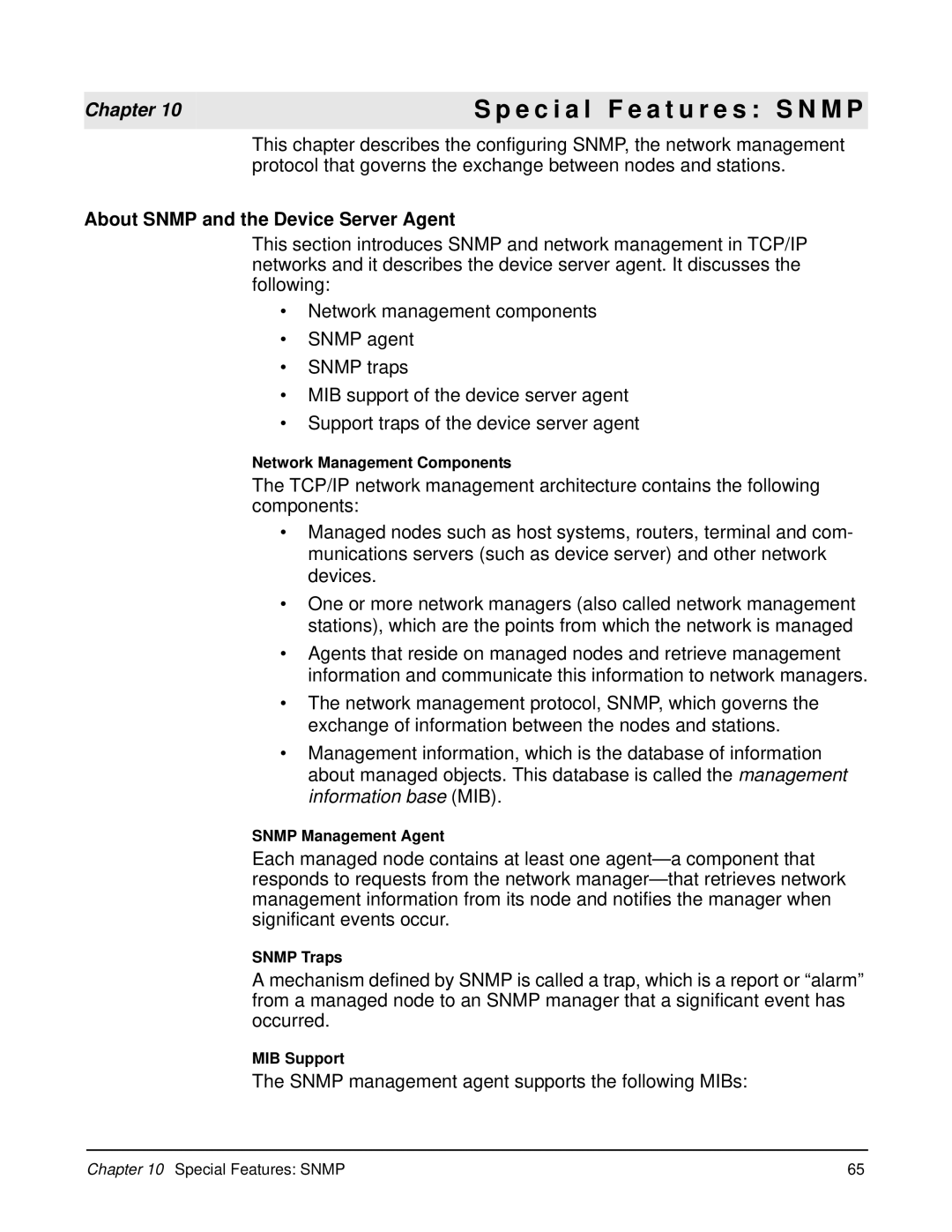Chapter 10 | S p e c i a l F e a t u r e s : S N M P |
|
|
This chapter describes the configuring SNMP, the network management protocol that governs the exchange between nodes and stations.
About SNMP and the Device Server Agent
This section introduces SNMP and network management in TCP/IP networks and it describes the device server agent. It discusses the following:
•Network management components
•SNMP agent
•SNMP traps
•MIB support of the device server agent
•Support traps of the device server agent
Network Management Components
The TCP/IP network management architecture contains the following components:
•Managed nodes such as host systems, routers, terminal and com- munications servers (such as device server) and other network devices.
•One or more network managers (also called network management stations), which are the points from which the network is managed
•Agents that reside on managed nodes and retrieve management information and communicate this information to network managers.
•The network management protocol, SNMP, which governs the exchange of information between the nodes and stations.
•Management information, which is the database of information about managed objects. This database is called the management information base (MIB).
SNMP Management Agent
Each managed node contains at least one
SNMP Traps
A mechanism defined by SNMP is called a trap, which is a report or “alarm” from a managed node to an SNMP manager that a significant event has occurred.
MIB Support
The SNMP management agent supports the following MIBs:
Chapter 10 Special Features: SNMP | 65 |
